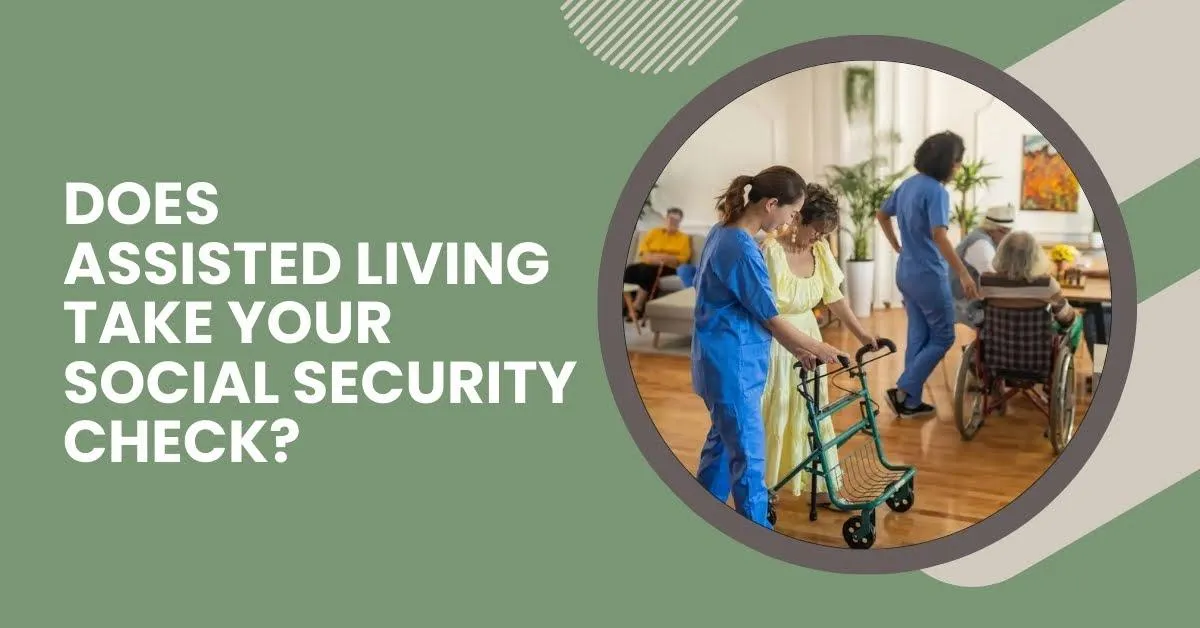
Does Assisted Living Take Your Social Security Check?
When considering assisted living, one of the most common questions families ask is whether the facility will take your Social Security check to cover the cost of care. The answer is not simple. It depends on the situation. Social security and assisted living have a varied relationship. However, understanding how Social Security benefits apply to assisted living can help you plan and make informed decisions for your loved one’s care.
At Walnut Villa, we aim to provide clarity and help you navigate the financial aspects of assisted living. This blog will explore how Social Security works with assisted living costs. We will cover what to know about paying for care. Also, we will discuss how Whittier assisted living communities manage these payments.

1. How Social Security Benefits Apply to Assisted Living
Social Security benefits aim to provide financial assistance to retirees and disabled individuals. You can use these benefits to help cover living expenses, including healthcare, but certain guidelines dictate how they apply to assisted living.
Generally, you use your Social Security check to cover living expenses, such as rent and utilities, at the assisted living community. However, social security and assisted living costs are not automatically matched. Assisted living communities do not receive Social Security payments directly. Residents or their families must manage the funds themselves.
2. Does assisted living take your Social Security check?
When you move into an assisted living facility like Walnut Villa, it depends on the payment structure whether they will take your Social Security check.
In most cases, assisted living communities will require you to provide your Social Security check rather than taking it automatically. Instead, you, the resident, or a family member must use the Social Security payment to pay for care. Individuals generally use the Social Security check as part of their overall financial resources to pay for assisted living services.
Social Security and assisted living expenses vary from one facility to another. Some facilities may offer an all-inclusive rate that covers rent, meals, and care services. Others may have separate charges for different levels of care, such as basic assistance versus more advanced memory care.
At Walnut Villa, for example, your Whittier assisted living provider will work with you to ensure that you understand the financial structure and what your Social Security check will cover.
3. Other Financial Resources to Cover Assisted Living Costs
While your Social Security check can help pay for assisted living, it often doesn’t cover all the costs. The average cost of assisted living in the United States can vary depending on location, services provided, and the level of care needed. Often, residents will need to supplement their Social Security benefits with other financial resources.
Here are some additional funding options for assisted living:
Private Savings or Retirement Funds
Many individuals use personal savings or retirement funds, such as IRAs or 401(k)s, to cover the remaining costs of assisted living. These funds can help cover the gap between Social Security payments and the total cost of care.
Long-Term Care Insurance
If you or your loved ones have long-term care insurance, you can use it to help pay for assisted living expenses. This can be a helpful supplement to Social Security benefits and other income.
Veterans Benefits
If the resident is a veteran, they may qualify for additional financial support through the U.S. Department of Veterans Affairs (VA). VA benefits can help cover some assisted living costs. This is especially true for those with service-related disabilities.
Medicaid
For those who qualify, Medicaid can help pay for assisted living, particularly for residents with low income and limited assets. Eligibility varies by state. So, check local Medicaid offices for the requirements.
At Walnut Villa, we can guide you through these financial options and help you determine the best strategy for covering your parents' care.
4. How to Manage Social Security in Assisted Living

Managing your Social Security payments effectively is crucial when transitioning to assisted living. Here are some tips on how to handle social security and assisted living costs:
Step 1: Notify Social Security of the Change in Living Situation
Once your loved one moves into an assisted living facility, you must notify the Social Security Administration (SSA) of the change in living situation. This is important because the SSA needs to know where to send the payments and how to handle any adjustments in benefits.
If the resident manages their own living arrangements, they will receive their Social Security payments directly. If the resident moves to assisted living and gets care, a responsible party or representative payee may need to direct the payments.
Step 2: Set Up a Payment Plan with the Assisted Living Facility
Each Whittier assisted living community may have its own payment plan. It’s important to work with the facility to set up a payment structure that suits your needs. Most facilities require payments on a monthly basis, and you’ll want to ensure that your Social Security check arrives in time to cover these costs.
At Walnut Villa, our team will help you set up a payment plan. We'll ensure that Social Security benefits are properly applied to the cost of care. We also disclose any extra costs, like healthcare or additional services, that may be necessary.
Step 3: Consider Other Supportive Services
Also to Social Security benefits, consider if your loved one needs more services, like medical care, therapy, or specialized memory care. The basic rate might not cover these services. You may need extra funding from long-term care insurance, Medicaid, or private savings.
5. Can Social Security Be Used to Pay for All Assisted Living Costs?
No, Social Security does not always fully cover assisted living costs. Social Security benefits can help with some expenses. But, they usually aren't enough to cover the full cost of living in an assisted living community.
Assisted living costs vary by location and care level in the U.S. In some areas, Social Security may cover most costs. In some cases, they may need more funding to fill the gap.
Your Social Security check can help. But, explore other options for full coverage.
6. Choosing the Right Assisted Living Facility
Choosing the right assisted living facility is crucial. It ensures your loved one gets the care they need, without financial strain. Here are some things to consider when selecting a facility:
Cost and Payment Options
Understand the costs upfront and ask about financial help options such as Medicaid, long-term care insurance, or veterans' benefits.
Services Provided
Ensure the facility offers the services your loved one needs, such as medication management, personal care help, and specialized programs for dementia or other health conditions.
Location
Proximity to family and friends is important, as regular visits can make a significant difference in your loved one’s emotional well-being.
Reviews and Reputation
Research the facility’s reputation and reviews from other families. A reputable facility like Walnut Villa will have staff members dedicated to providing quality care and services.
Conclusion
When choosing an assisted living facility, consider its cost, location, services, and reputation. Walnut Villa can help guide you through this process to ensure you find the best fit for your loved one.
In conclusion, social security and assisted living costs can help. But they may not cover all assisted living expenses. Explore options like private savings, long-term care insurance, or Medicaid. They can help ensure your loved one gets the care they need. Walnut Villa provides services and financial advice. We help you find the best solution for your family.
7. FAQs
1. Will my Social Security check cover the entire cost of assisted living?
Typically, Social Security benefits will cover part of the cost, but not all. You may need additional financial resources, such as private savings or long-term care insurance, to cover the rest.
2. How do I manage Social Security payments for my loved one in assisted living?
You must notify the Social Security Administration about the change in living situation and set up a payment plan with the assisted living facility. Payments are usually directed to the resident or a representative payee.
3. What other financial resources can I use for assisted living?
Besides Social Security, you can use other options to pay for assisted living. They include long-term care insurance, veterans benefits, Medicaid, and personal savings.
4. Can Medicaid help pay for assisted living?
Yes, for those who qualify, Medicaid can help pay for assisted living, but eligibility varies by state. Be sure to check with your state’s Medicaid office for specific guidelines.
5. How do I choose the right assisted living facility for my parents?
To choose the right assisted living facility, assess the level of care your parent needs and visit multiple facilities to evaluate their staff, environment, and services.

Facebook
Instagram